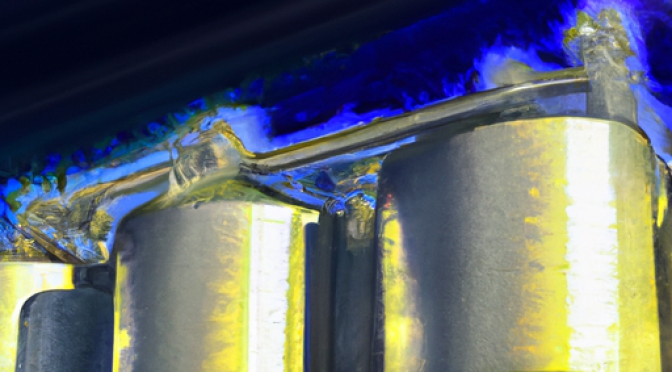Introduction
Grain storage and transportation technologies play a crucial role in ensuring the efficient and safe handling of agricultural products. With the advent of Artificial Intelligence (AI), these technologies have witnessed significant advancements, revolutionizing the industry. This article explores how AI is enhancing the efficiency and safety of grain storage and transportation technologies.
Improved Monitoring and Predictive Analytics
AI-powered systems enable real-time monitoring of grain storage facilities, ensuring optimal conditions for grain preservation. By analyzing data from sensors and cameras, AI algorithms can detect potential issues such as temperature fluctuations, humidity levels, and pest infestations. This early detection allows for timely interventions, preventing spoilage and reducing losses.
Furthermore, AI algorithms can analyze historical data to predict future grain quality and storage conditions. By considering factors such as weather patterns, storage duration, and grain characteristics, these systems can provide accurate forecasts, enabling farmers and storage operators to make informed decisions regarding storage duration, transportation schedules, and market timing.
Automated Grain Sorting and Quality Control
AI-powered sorting systems have revolutionized grain quality control. By utilizing computer vision and machine learning algorithms, these systems can accurately identify and sort grains based on various parameters such as size, color, and moisture content. This automation eliminates the need for manual sorting, reducing labor costs and improving overall efficiency.
Moreover, AI algorithms can detect and remove contaminated or damaged grains, ensuring that only high-quality grains are stored and transported. This not only enhances the safety of the food supply chain but also reduces the risk of spoilage and contamination during storage and transportation.
Optimized Logistics and Route Planning
AI algorithms can optimize logistics and route planning for grain transportation, leading to significant efficiency improvements. By considering factors such as grain volume, destination, road conditions, and traffic patterns, these systems can determine the most efficient routes and transportation modes. This reduces transportation costs, minimizes delivery times, and improves overall supply chain performance.
Additionally, AI-powered systems can monitor real-time traffic conditions and provide alternative routes in case of congestion or accidents. This proactive approach ensures timely deliveries and minimizes the risk of grain spoilage due to extended transportation durations.
Enhanced Safety and Security
AI technologies enhance the safety and security of grain storage facilities by detecting and preventing potential hazards. AI-powered transforming-the-surveillance-and-management-of-large-scale-aquaculture/" target="_blank">surveillance systems can monitor storage areas and identify unauthorized access, fire risks, or abnormal activities. This enables prompt response and mitigates the risk of theft, accidents, or other security breaches.
Furthermore, AI algorithms can analyze data from various sources, including weather forecasts and historical data, to predict potential safety risks such as grain combustion or structural failures. By providing early warnings, these systems allow for preventive measures to be taken, ensuring the safety of both personnel and stored grains.
Conclusion
Artificial Intelligence has revolutionized grain storage and transportation technologies, enhancing efficiency and safety in the industry. Through improved monitoring and predictive analytics, automated grain sorting, optimized logistics, and enhanced safety measures, AI is transforming the way grains are stored and transported. As AI continues to advance, we can expect further innovations that will drive the industry towards even greater efficiency and safety.

